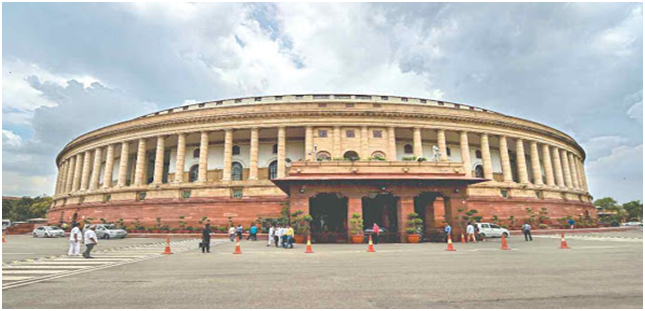Heat waves-गर्म तरंगें
In News
Recently, large geographical areas in India experienced heatwave conditions.
Heat wave
Qualitatively, a heat wave is a condition of air temperature which becomes fatal to the human body when exposed.
Quantitatively, it is defined based on the temperature thresholds over a region in terms of actual temperature or its departure from normal.
Criterion
Heat wave is considered if the maximum temperature of a station reaches at least 40°C or more for Plains and at least 30°C or more for Hilly regions.
For coastal stations in India : When maximum temperature departure is 4.50°C or more from normal, Heat Wave may be described provided the actual maximum temperature is 37°C or more.
Favourable conditions
Transportation / Prevalence of hot dry air over a region (There should be a region of warm dry air and appropriate flow pattern for transporting hot air over the region).
Absence of moisture in the upper atmosphere (As the presence of moisture restricts the temperature rise).
The sky should be practically cloudless (To allow maximum insulation over the region).
Large amplitude anticyclonic flow over the area.
El Niño leads to extreme heat in many parts of the world and the ocean.
Areas in India are prone to heatwaves
The Core Heatwave Zone (CHZ) spanning central, north, and peninsular India between Gujarat and West Bengal is prone to heatwave conditions every year, during the summer season March to June and occasionally in July.
Rajasthan, Punjab, Haryana, Chandigarh, Delhi, West Madhya Pradesh, Uttar Pradesh, Chhattisgarh, Odisha, Vidarbha in Maharashtra, parts of Gangetic West Bengal, coastal Andhra Pradesh, and Telangana are the most heat-wave-prone states or regions.
Impacts
Population exposure to heat is increasing due to climate change
The health impacts of Heat Waves typically involve dehydration, heat cramps, heat exhaustion and/or heat stroke
Heatwaves can burden health and emergency services and also increase strain on water, energy and transportation resulting in power shortages or even blackouts.
Food and livelihood security may also be strained if people lose their crops or livestock due to extreme heat.
Affect agricultural output, cause water scarcity, increase the demand for energy, and affect ecosystems and air quality.
Initiatives
Governments at various levels — State, district, and city — have prepared heat action plans (HAPs).
HAPs aim to increase preparedness and lower the adverse impacts of extreme heat by outlining strategies and measures to prepare for, address, and recover from heat waves.
The National Disaster Management Authority and IMD are reported to be working with 23 States to develop HAPs.
The Election Commission of India has issued an advisory to manage the impact of heat waves during voting, including carrying a water bottle and protecting oneself from direct sunlight.
Suggestions
The focus should be given to passive cooling inside buildings through better ventilation, window shading, reflective paints, suitable building materials, and traditional methods.
Understanding heat hotspots, increase in green-blue structures, access to cool spaces, support for suitable adaptation measures, and multisectoral health-centric heat action plans are relevant.
Assessing patterns of socio-economic, demographic, and environmental factors, access to basic services, disease distribution, existing institutional mechanisms, and preparedness helps to take stock of the situation and to prioritise resource allocation for vulnerable populations, and strengthen institutional responses.
---------------------------




.jpg)
.jpg)
.jpg)
.jpg)
.jpg)
.jpg)
.jpg)



